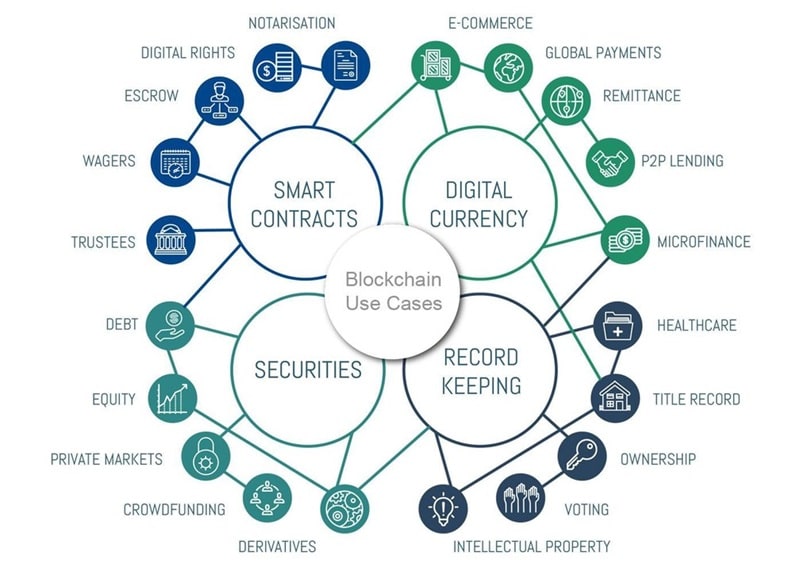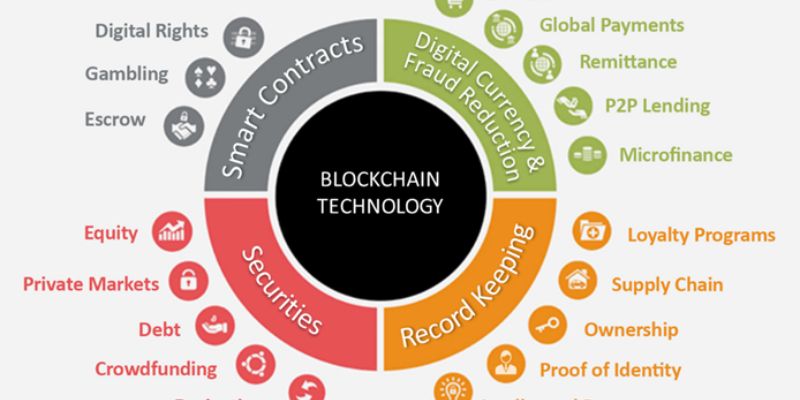Advantages of blockchain are reshaping our world’s financial landscape. Wonder how? Imagine a system where your transactions are not just secure but virtually unbreakable. That’s the promise of blockchain. It’s not some future concept; it’s here, enhancing how we ensure trust in our dealings. Think lower costs, transparent business, and operations humming along faster than ever. This revolution goes beyond just saving time and pennies, it redefines accountability in our digital era. Ready to unpack the future of secure transactions? Let’s dive in.
Enhancing Security and Trust in Transactions
The Role of Cryptography in Blockchain Security Benefits
Blockchain gives us a secure way to keep our data safe. It uses special math called cryptography. This math locks up our data like a treasure chest. Only people with the right key can open it. This keeps our digital gold safe from thieves and hackers.
Cryptography is the backbone of blockchain security. Every piece of data gets a unique lock. Changing even a little bit of the data changes the lock. This makes it very hard to tamper with. Are you worried about someone changing your records without you knowing? With blockchain, you can relax. If someone tries, the system will catch it.
Now, let’s dive deeper. Blockchain provides enhanced transparency. This means you can see every transaction that happened. It’s like having a clear stream where you can see every stone. Shady deals become harder to hide in such clear water.
Ensuring Data Integrity with Immutable Ledger
An immutable ledger is like a written promise that can’t be broken. Once something is on the blockchain, think of it as set in stone. Nobody can change it—not even the person who put it there. This builds trust through distributed ledger technology. It’s a public book that everyone can check, anytime.
Why is that good for you? Think about keeping track of something valuable. You’d want to be sure no one could go back and change the records. With an immutable ledger, you can trust that what you read is true. It’s a strong foundation for things like smart contracts applications. These are like deals that make themselves. They check the rules and follow through without needing a person to say “go.”
Now, let me give you a real-world example. Consider blockchain in supply chain management. Here, an immutable ledger means you can trace a product from start to finish. It’s a roadmap of the whole journey. Let’s say you buy a toy. With blockchain, you can tell where the plastic came from, where it was made, and how it got to you.
These transparent and unchangeable records help in many ways. They stop fraud, cut cost reduction with blockchain, and speed up things like cross-border payments. Just imagine sending money across the world with no wait time. It’s real with blockchain!
In short, blockchain can make dealing with money and records much safer and easier. We can all rest a bit easier knowing our stuff is locked up tight on a blockchain. It’s like having the world’s best security team on your side 24/7.
Revolutionizing Efficiency and Cost Management
Streamlining Processes for Cost Reduction with Blockchain
Blockchain changes how we think about saving money in business. This tech can make many steps simpler. For example, it removes the need for some middle folks when we move money. This means we pay less in fees. Fewer steps and fewer fees cut costs big time.
When we get blockchain into the picture, it can really tie everything together. Look at how we track goods from start to finish. Blockchain makes this tracking open and easy to check. Open tracking can stop folks from making fake goods. That keeps costs down, too.
Think of a big list that everyone can see and add to, but no one can change or delete. That’s blockchain. It ensures all the info stays the same over time. This sort of record-keeping cuts down mix-ups. It makes sure that info is right, which also helps in saving money.
The Impact of Smart Contracts Applications on Operational Efficiencies
Let’s talk smart contracts now. They are like regular deals between folks but run on their own when certain things happen. Imagine you’re buying a game online. With a smart contract, once you pay, the game starts to download. No waiting, no errors, just smooth sailing.
Smart contracts can manage money, property, shares, or anything of value in a clear, conflict-free way. This means less need to call the lawyers. We save on time and money, yet again.
Blockchain is also about who owns what. It keeps a secure list of who holds items like houses, art, or even ideas. This makes buying and selling easier and safer. We know right away if the item is really theirs to sell.
In short, blockchain can do lots. It’s not just for tech wizards or money experts. It’s here for smoother business, safer deals, and saving a good deal of cash along the way. You get more with less, and that’s a win for everyone.
Driving Transparency and Accountability in Business Practices
Blockchain in Supply Chain: Elevating Traceability
Imagine knowing where your apple came from, who picked it, and how it got to you. This is traceability, and blockchain makes it rock-solid. Supply chains span countries, and countless hands touch every product. For a boss, it’s a headache to track everything. Blockchain, a chain of digital blocks that store data, helps with this.
Each block gets sealed tight with math. No messing with it afterward. When you add blockchain to supply chains, magic happens. Products get tags; each move they make is a new block. You see every step, from farm to store. It’s all there, honest and clear.
Now let’s say you run a business selling toys. Parents care about safety. You use blockchain to show every part, every place a toy has been. Sourced lead-free? Check. Built with care? Check. Parents trust you. They can check too.
This isn’t just good for food or toys. It works for meds, tech, even clothes. Fake goods can’t hide in a transparent system. A fake is like a broken link. It stands out. So, you trust what you buy is what it claims.
Transparency in Transactions: Building Trust in Decentralized Systems
Cash is clear; you hand it over, and that’s it. Digital money, though? It’s tricky. How do you know it’s safe, or even real? With blockchain, you know because everyone can see the transactions. They’re out there for folks to check, like a big, digital ledger in the sky. But here’s the cool part: while everyone sees the moves, your stuff is still private. Neat, right?
Bitcoin does this. It’s a kind of digital money, or cryptocurrency. Every trade is a block, lock it down, and it joins the chain. All above board, all checkable. Business done this way? It changes the game. You don’t just give trust. You see reasons to trust.
But it goes beyond bitcoin. Other digi-coins do the same. Systems that shift money fast, cheap, and clear. No sneaky fees or long waits. You want to send cash overseas? Bam! It’s there. Blockchain cuts out the middlemen, and that saves everyone time and money.
Now, let’s not forget contracts. You know, those things tied in red tape with a tiny print. Smart contracts run on blockchain too. ‘Smart’ means they’re like tiny robots. If X happens, they do Y. No fighting over words; it’s all coded. Deals close faster, and the terms are crystal.
We’re in a world where trust is hard-earned. With blockchain, we’re building it into our systems from the start. It’s a change that’s good for you, me, and everyone doing honest business. Transparency isn’t a fancy extra; it’s the main show, and blockchain brings it big time.
Optimizing Performance and Expanding Capabilities
Achieving Scalability and Speed: Blockchain Transaction Speed and Scalability
When we talk about blockchain, we often praise its security. But let’s dive into an aspect just as crucial — how fast and big it can grow, that is, its speed and scalability. Just like a tree starts from a seed and grows tall and wide, blockchain systems also start small and aim to grow. They need to handle more users and transactions without slowing down.
Can blockchain handle a lot of transactions quickly? Yes, it can. To explain further, blockchain scalability means the system can support more transactions per second as the number of its users grows. Blockchain transaction speed refers to how quickly a single transaction gets confirmed and added to the ledger.
In the early days, some blockchains were sluggish. Like old cars, they couldn’t move very fast. Now we have newer technologies making these networks zoom like race cars, processing more transactions at better speeds. We are also learning how to let more transactions happen at once, solving the traffic jam problem. These improvements mean you can trust that your transaction will be fast, even if everyone decides to use the blockchain at the same time.
Fostering Direct Engagement through Peer-to-Peer Network Blockchain
Imagine playing catch without anyone in the middle to intercept or delay the ball. That’s how a peer-to-peer, or P2P, network works. In a P2P blockchain, each person holds a piece of the blockchain. They send and receive transactions directly to and from each other.
Why is a P2P network blockchain good for us? It’s like having a direct line to whoever you are dealing with, without anyone else butting in. You don’t have to worry about someone else making a mistake with your information, as there are no middlemen.
With everyone connected directly, things move faster and with less fuss. It helps save money too, since there are no fees to pay for having middlemen like banks. Also, you can say goodbye to the days when you couldn’t reach out directly to the person you’re doing business with. With P2P, you’re in the driver seat of each interaction.
Taking this path, blockchain is not just curing headaches of the past but also paving smoother roads for our future. From you buying a morning coffee with cryptocurrency to large companies tracking items worldwide, blockchain’s speed and direct engaging networks are setting the new standard. So now, you can look forward to living in a world where securely managing your transactions is as easy and efficient as sending a text message.
To wrap up, we’ve seen how blockchain boosts security, cuts costs, and adds clearness to business. We touched on its power to keep data safe with encryption and immutable records. This means less worry about fraud or errors. Then, we dove into how blockchain makes business cheaper and faster, especially with smart contracts handling deals without fuss.
We also covered how blockchain makes things in business more open and honest. For instance, it helps you track items from start to end in the supply chain. Lastly, we saw how blockchain can grow with your needs and lets folks interact directly in a network.
In short, blockchain is not just tech talk; it’s a real game-changer. It makes work easier and safer for everyone. Keep an eye on it, as it’s shaping our future right now.
Q&A :
What are the major benefits of using blockchain technology?
Blockchain technology offers a multitude of benefits that have significant implications across various industries. The foremost advantages include enhanced security due to its decentralization and cryptographic hashing, which prevent unauthorized access and alterations. In addition, blockchain enables transparency as each participant in the network can view transaction histories. This combination of security and transparency fosters trust among users. Blockchain also provides increased efficiency and speed, as it eliminates the need for intermediaries, streamlining processes, and reducing delays. Finally, reduced costs are another notable benefit, as blockchain removes the necessity for third-party verifications, leading to lower transaction fees.
How does blockchain technology improve security and transparency?
Blockchain’s structure inherently bolsters security and transparency. Every transaction on the blockchain is recorded on blocks and across multiple copies of the ledger that are distributed across a network of nodes, making it incredibly difficult to alter or forge information. Cryptographic hashing ensures that any changes to a single block would require altering preceding blocks, which is computationally infeasible across a widespread network. This decentralized and immutable ledger system ensures that all network participants can trust the authenticity of the records without the need for a centralized authority, thus maintaining transparency.
Can blockchain technology be applied to industries outside of finance?
Absolutely, blockchain technology has potential applications far beyond its origination in the digital currency realm. Various industries can harness blockchain’s advantages, such as supply chain management for tracking the production, shipment, and delivery of products in real time. In healthcare, it can secure and streamline the sharing of medical records. The technology also holds promise for voting systems, providing a secure means to record and tally votes. Additionally, blockchain can be utilized in the field of intellectual property and royalties, and in legal processes for contract validation, just to name a few applications.
Why is blockchain considered efficient for business processes?
Blockchain technology enhances efficiency for business processes mainly due to its elimination of intermediaries and automation of transaction verifications. By using smart contracts, terms of the agreement are embedded into the blockchain and automatically executed, thus reducing paperwork and the need for manual processing. This not only speeds up transactions but also minimizes human error, leading to smoother and faster business operations. Moreover, with a single, shared ledger, there is no discrepancy between data entries, which streamlines reconciliation in financial transactions or supply chain updates.
How does blockchain technology reduce costs for transactions?
Blockchain significantly reduces costs associated with transactions mainly by cutting out middlemen or intermediaries that traditionally facilitate these processes. Without the need for banks or other financial services to verify transactions, for example, the associated fees are also removed. Furthermore, since blockchain operates on a trustless system, there’s less need for extensive documentation and assurance processes, thus reducing the administrative burden and the costs related to audits, compliance, and reporting. The transparent and immutable nature of blockchain also reduces costs related to frauds and errors.





RELATED POSTS
Naoris Protocol Airdrop: Get free NAORIS Tokens
Naoris Protocol is an advanced...
Advantages of Blockchain Traceability: Unveiling Supply Chain Revolutions
Enhance supply chain visibility and...
Layer 1 Blockchain Explained: Unveiling the Foundation of Crypto Security
What is a layer 1...
Man-in-the-middle Attack On Blockchain: Can Really Be Compromised?
Protect Your Blockchain: Defend Against...
What is Tokenized Real Estate? – Unlocking Global Investment Opportunities
What Is Tokenized Real Estate?...
On-Chain Data Analysis Instructions: Unlock Crypto Market Secrets Now
Grasp the basics of on-chain...
Exploring The Different Types Of Consensus Mechanisms In Blockchain
Explore the Landscape of Blockchain...
Keith Grossman: The journey from media to finTech
Discover the life and career...
Unveiling the Blockchain Explorer: Your Ultimate Guide to Crypto Navigation
What is a Blockchain Explorer?...
Distributed Ledger Technology vs Blockchain – A Comparative Analysis
Have you ever wondered about...
Moonwalk Fitness Airdrop – Guide to Participate and Receive Rewards
Moonwalk Fitness Airdrop offers a...
Cryptocurrency Unveiled: Unlocking the Mysteries Beyond Blockchain
How is cryptocurrency different from...
Emerging Consensus Mechanisms: Beyond PoW and PoS, What’s Next?
Emerging consensus mechanisms (alternatives to...
Regulations for Blockchain Technology: Navigating Tomorrow’s Rules
"Understanding future regulations for blockchain...
New Threats to Blockchain Security: Are Your Investments at Risk?
Protect Your Blockchain: New Threats...
MiCA: A new regulation or a restraint on Crypto?
Starting from December 30, the...